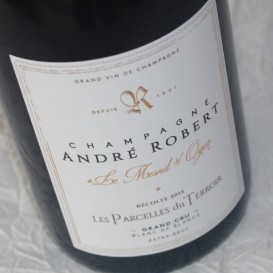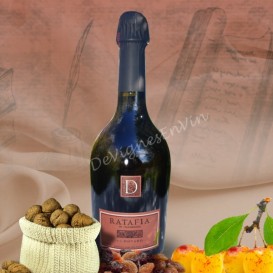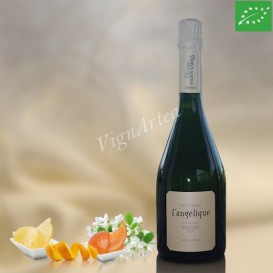PRISME 18 (Champagne Guiborat)
CÔTE DES BLANCS - AOP CHAMPAGNE - BLANC DE BLANCS CHAMPAGNE
Grape variety: Chardonnay (100%)
Extra Brut Grand Cru Sugar addition: 1,5 g/l
Complex - Fresh - Well-balanced
- Nose: lively and elegant. Notes of brioche, almond paste and citrus fruit
- Palate: lively and elegant. Notes of brioche, almond paste and citrus fruit
- Tasting date: October 2023
- OUR OPINION: a very fresh and complex vintage, perfectly balanced, with an elegant tension!
The exceptional bottle's weight (1.8kg) may result in higher shipping costs for the final shopping cart.
TERROIR
The grapes from the 2018 harvest used in the PRISME 18 composition come from the following 4 plots :
- 30% of the must comes from the Cramant village - locality of Les Bergeries (vines plantation date : 1984)
- 43% of the must comes from the Chouilly village - locality of Les Caurès (vines plantation date : 1946 and 1998),
- 16% of the must comes from the Chouilly village - locality of Les Mont Aigu (vines plantation date : 1969),
- 3% of the must comes from the Oiry village - locality of Gros Mont (vines plantation date : 1969), completed with reserved wine of PRISME 17.
These four plots rest on a white chalk soil dating from the Campanian (Upper Cretaceous Period between -83 and -71 m.y), with some silty and stony outcrops stemming from the surrounding peaks erosion.
The formation of this Campanian chalk began with the sedimentation, in a shallow sea, of a limestone mud essentially constituted by algae skeletons debris. The evolution of this mud over nearly 30 million years led to the formation of the famous chalk encountered in the Côte-des-Blancs soils.
Composed of a very pure limestone, the chalk in this region offers a very high porosity and therefore a very great capacity of water retention. It can however cause phenomena of vine chlorosis, which is mitigated by the choice of a suitable rootstock.
WINEGROWING & WINEMAKING
The estate respects the principles of the Sustainable Agriculture : no systematic treatments, they are only used when it is strictly necessary.
The grapes are harvested manually and immediately pressed by slow pressing. The champagne is made with mainly the 2018 vintage and completed with 8% of the PRISME 17 reserved wine.
Only the cuvée is used : it is the juice obtained during the first three successive presses. Once the alcoholic fermentation is complete, the malolactic fermentation is voluntarily stopped and the must is aged on its fine lees for 7 months in stainless steel tanks.
After bottling, sugar is added (liqueur de tirage) for the second fermentation. The bottle rests on slats for 44 months.
Once disgorged, sugar is added (liqueur d'expédition) at a rate of 1,5 g/l and the champagne rests again in the cellar for 6 to 12 extra months before marketing.
- Second fermentation triggering: April, 2019
- Cellar ageing: 44 months
- Disgorgement: November 2022
- Rest in the cellar for 6-12 months after disgorgement and before marketing
- Sugar addition: 1,5 g/l

| Country | Champagne |
| Color | White |
| Orange wines | No |
| Clay amphorae wines | No |
| Blanc de Blancs | Yes |
| Type | Extra-Brut |
| Classification | Grand Cru |
| Capacity | 75 cl |
| Single Grape Variety | Chardonnay |
| Blend | 2018 (92%) - PRISME 17 reserved wine (8%) |
| Alcohol rate | 12,5 % |
| Quality Designation | Champagne |
| Cellar Potential | 20 years |
| Service advise | 10-12°C (50 – 54°F). Open 1/4h before serving. |
| Culture Methods | Sustainable cultivation method |
| Total SO2 | 35 mg/l |
| Sugar addition | 1,5 g/l |
| Comments | Only must of cuvée ♦ 7 months of ageing in stainless steel tanks ♦ No Malolactic fermentation ♦ "Slats" ageing for 44 months followed by a cellar ageing for 6-12 months after disgorging. |


































